Pork is one of those magical meats that can transform from simple to sublime with just a few well-chosen spices. Whether you're grilling ribs, slow-cooking a shoulder, or searing chops on the stove, the right blend of seasonings unlocks layers of flavor that make your dish unforgettable. Here are the top 10 spices for pork and how to use them effectively:
| # | Spice | Flavor Profile | Popular Use Case | Visual Example |
|---|---|---|---|---|
| 1 | Smoked Paprika | Sweet, smoky, slightly spicy | Ribs, pulled pork, roasts | 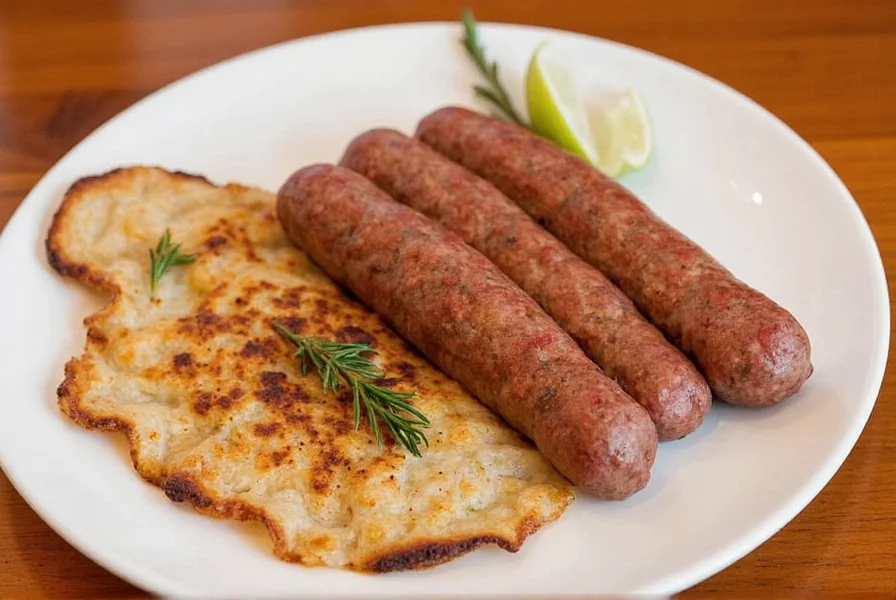 |
| 2 | Fennel Seeds | Elegant licorice note | Italian sausage, meatballs | 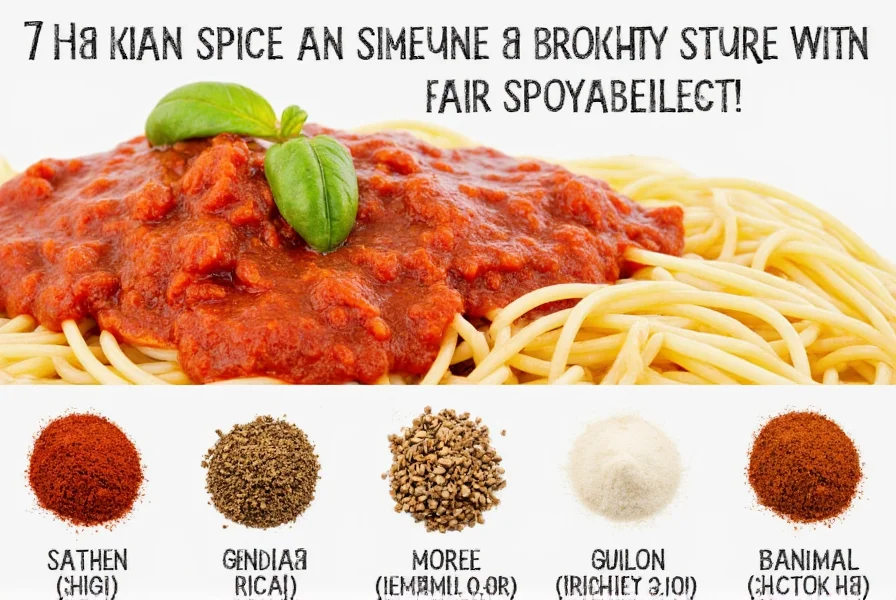 |
| 3 | Cumin | Earthy, nutty, warm | Barbecue rubs, carnitas | 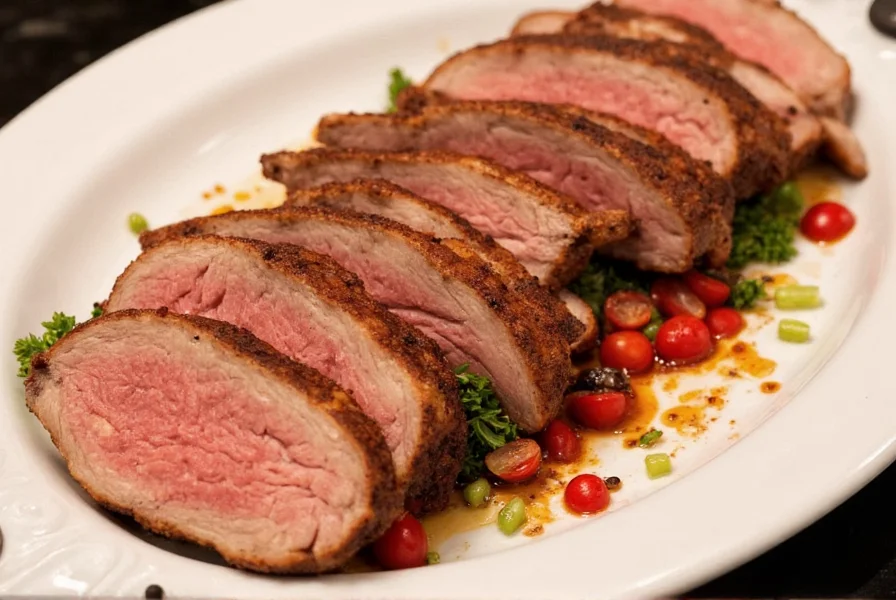 |
| 4 | Brown Sugar | Sweet, caramel-like base | Dry rubs for ribs and pork belly | 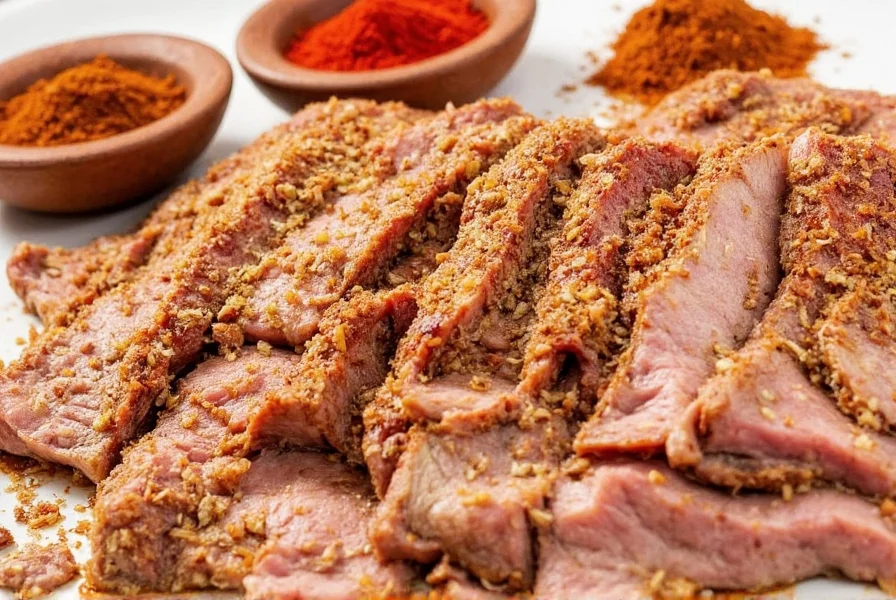 |
| 5 | Garlic Powder | Robust, savory | All-purpose seasoning | 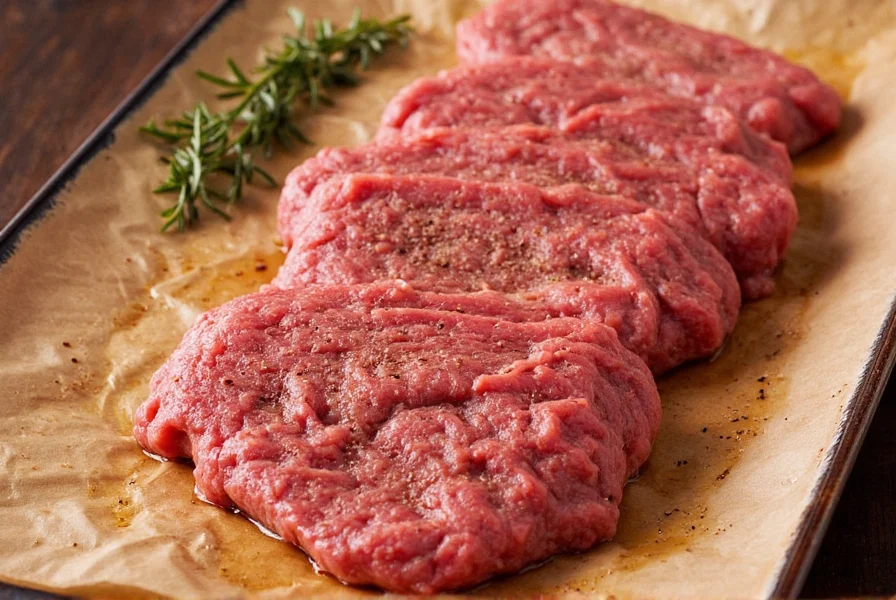 |
| 6 | Onion Powder | Subtle sweetness with depth | Marinades, dry rubs | 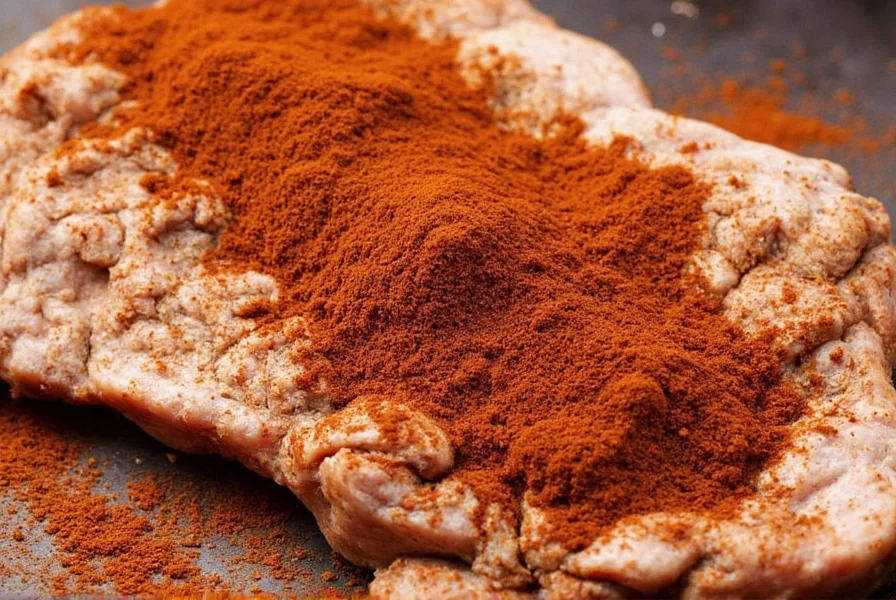 |
| 7 | Cayenne Pepper | Medium to hot spice level | Spicy rubs, jerk-style pork | 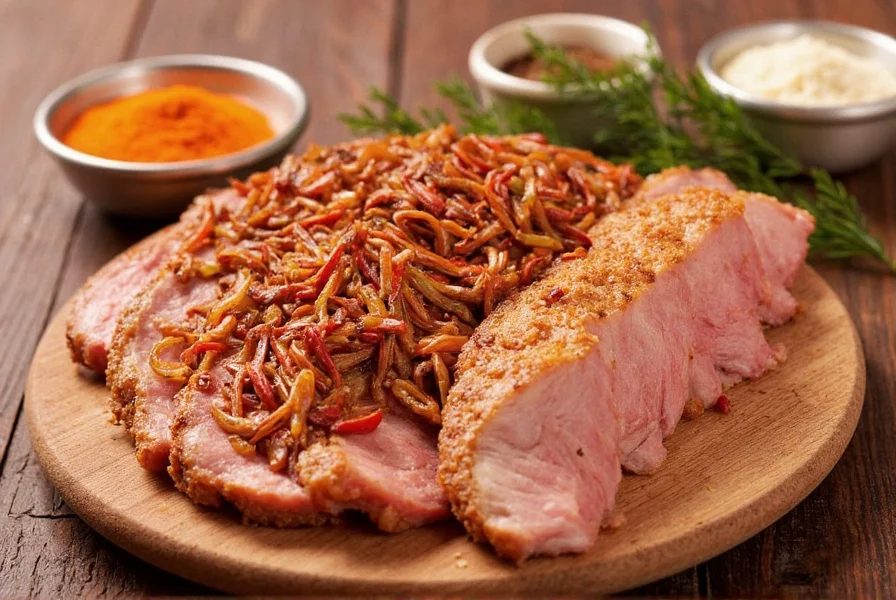 |
| 8 | Mustard Seed | Sharp, tangy, slightly bitter | Brines, marinades, glazes |  |
| 9 | Dried Thyme | Herbaceous, woodsy | Roasted pork, stews | 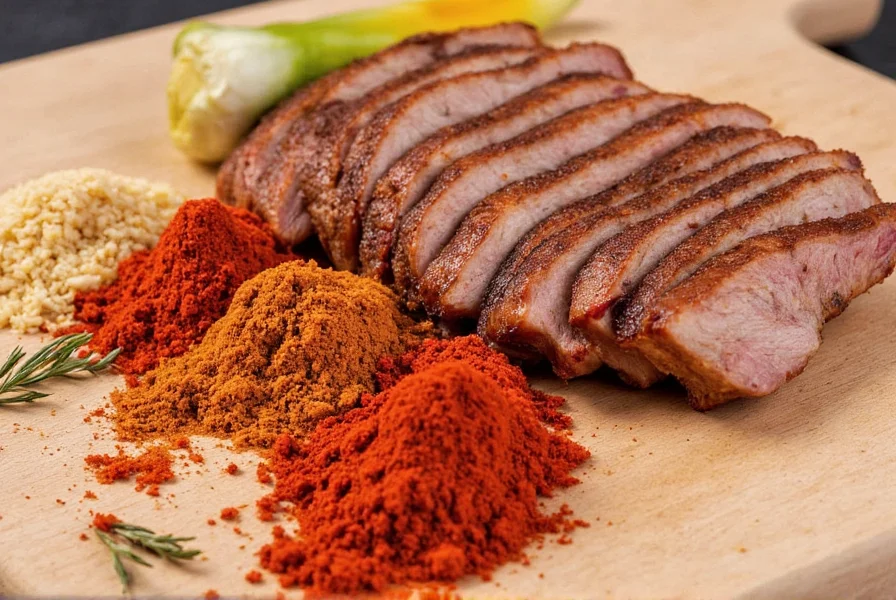 |
| 10 | Cinnamon | Warm, sweet, aromatic | Middle Eastern and Moroccan pork dishes | 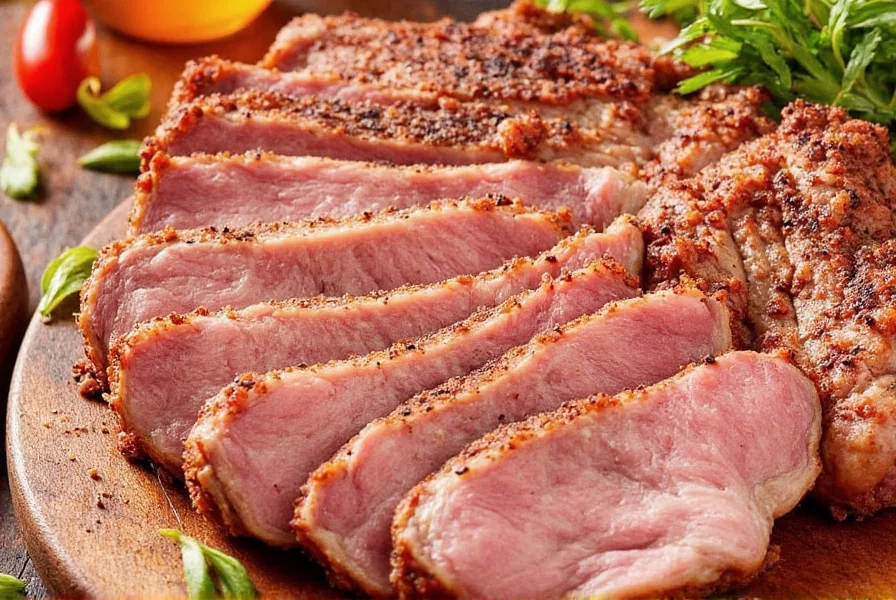 |
Why These Spices Work for Pork
Each spice brings unique characteristics that complement pork's natural richness. Smoked paprika adds depth without overpowering, while fennel seeds balance fatty cuts. Cumin provides earthy warmth for slow-cooked dishes, and brown sugar creates perfect caramelization in dry rubs. Garlic and onion powders deliver savory umami, while cayenne adds controlled heat. Mustard seed cuts through richness, thyme offers herbal brightness, and cinnamon introduces warm complexity in global cuisines.
Best Spice Combinations for Different Cuts of Pork
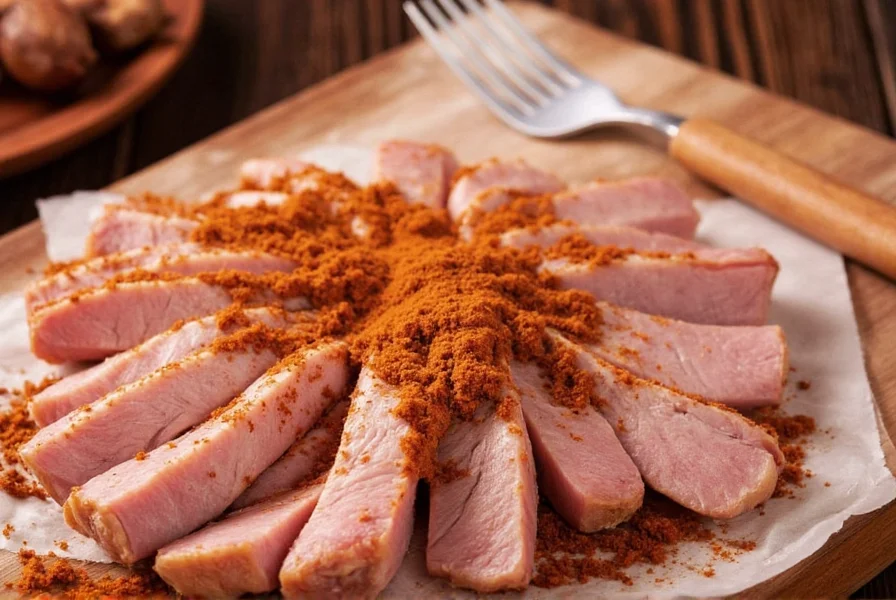
- Pork Ribs: Smoked paprika, brown sugar, garlic powder, onion powder, and a pinch of cayenne
- Pork Shoulder: Cumin, thyme, mustard seed, smoked paprika, and fennel
- Pork Chops: Rosemary, garlic powder, thyme, black pepper, and olive oil
- Pork Belly: Soy sauce, five-spice powder, garlic, and honey
- Ground Pork: Fennel seeds, garlic, black pepper, oregano, and red pepper flakes (perfect for Italian sausage)
Buying Guide: How to Choose the Best Spices
1. Whole vs. Ground
Whole spices (like cumin seeds or fennel) retain more potency and last longer than ground versions. Invest in a small grinder for fresher flavor and longer shelf life.
2. Organic vs. Conventional
Organic spices tend to be more vibrant and less likely to contain chemical residues. While not mandatory, organic options are worth considering for premium results.
3. Brand Reputation
Stick with trusted brands known for quality. Some popular names include:
- Penzeys Spices: Known for bold flavors and fresh batches
- Spice Islands: Offers consistent quality at affordable prices
- The Spice Garden: A favorite among chefs for artisanal blends
4. Packaging & Storage
Look for spices in airtight containers that protect against light and moisture. Avoid buying large quantities unless you use them frequently—spices do lose potency over time.
5. Sourcing
Spices sourced directly from their native regions often pack more flavor. For example, genuine Hungarian paprika or Indian cumin will typically outperform generic alternatives.
Storage Tips for Maximum Flavor
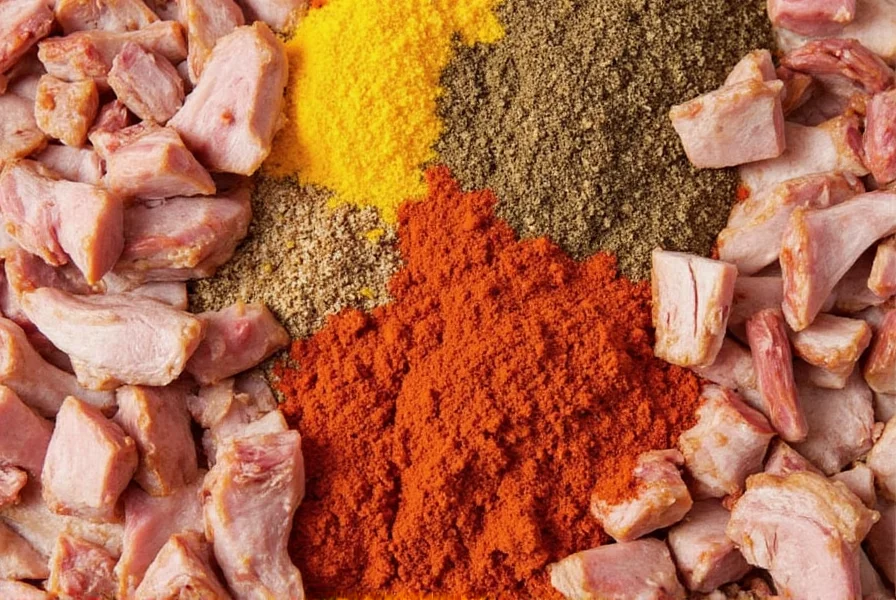
- Store in a cool, dark place like a pantry or cabinet
- Use airtight containers to prevent moisture and oxidation
- Avoid storing near heat sources (e.g., oven or stovetop)
- Label and date your spices to track freshness
- Replace spices every 1–3 years depending on usage
Frequently Asked Questions About Spices for Pork
What are the most essential spices I need to have for cooking pork?
The absolute essentials for pork include smoked paprika for that deep smoky flavor, garlic powder for savory depth, brown sugar to balance and caramelize, and salt for enhancing all other flavors. For versatility, add cumin (earthy notes), fennel seeds (for sausage lovers), and onion powder (to round out the flavor profile). With just these six spices, you can create dozens of delicious pork dishes across various cuisines.
How much spice should I use per pound of pork?
As a general rule, use about 1 tablespoon of dry rub per pound of pork. For individual spices in a rub, aim for 1-2 teaspoons per pound. For stronger spices like cayenne or mustard seed, start with 1/4 to 1/2 teaspoon per pound and adjust to taste. Remember that salt should make up about 1/3 of your total rub weight. When in doubt, start with less—you can always add more spice, but you can't take it away!
Can I use fresh herbs instead of dried spices for pork?
Absolutely! Fresh herbs work wonderfully with pork, but use them differently than dried spices. As a general guideline, use three times the amount of fresh herbs compared to dried (since dried herbs are more concentrated). Fresh rosemary, thyme, and sage are particularly good with pork chops and roasts. Add fresh herbs toward the end of cooking for delicate herbs like parsley, or at the beginning for heartier herbs like rosemary in slow-cooked dishes.
Why does my pork sometimes taste bland even when I use spices?
Several factors could cause bland pork despite using spices: 1) Not enough salt—salt is crucial for activating flavor receptors, 2) Spices that have lost potency—check expiration dates, 3) Not allowing enough time for flavors to penetrate—dry rubs need at least 30 minutes (or overnight for best results), 4) Cooking at too high heat which burns spices before they can flavor the meat, and 5) Not balancing flavors properly—ensure you have sweet, salty, acidic, and umami elements in your seasoning approach.
Which spices work best for pulled pork specifically?
Pulled pork benefits from a balanced rub with sweet, smoky, and savory elements. The classic combination includes smoked paprika (for that essential smoke flavor), brown sugar (to caramelize and balance), garlic powder, onion powder, cumin (for earthiness), and a touch of cayenne (for subtle heat). Mustard powder also works well as it helps break down proteins during the long cooking process. For authentic Carolina-style pulled pork, add a generous amount of black pepper to your rub.
How can I tell if my spices have gone bad?
Spices don't technically "go bad" but they lose potency over time. Here's how to check: 1) Smell test—fresh spices should have a strong, distinct aroma; if barely noticeable, they're past prime, 2) Color test—spices should be vibrant; faded color indicates loss of potency, 3) Taste test—dilute a small amount in warm water; if flavor is weak, it's time to replace. As a general rule, ground spices last 6-12 months, whole spices 1-2 years, and dried herbs 1-3 years when stored properly.
Can I substitute spices if I don't have the recommended ones for pork?
Yes, but with some considerations. For smoked paprika, use regular paprika plus a few drops of liquid smoke. No fennel seeds? Try anise seeds (use half the amount) or a pinch of star anise. Missing cumin? Coriander seeds can provide some earthiness, though the flavor profile will differ. For cinnamon in savory dishes, allspice can work as a substitute. Remember that substitutions change the final flavor, so start with less than the recipe calls for and adjust to taste as you cook.
Should I toast spices before using them on pork?
Toasting whole spices before grinding them can significantly enhance their flavor. Heat a dry skillet over medium heat, add whole spices (like cumin seeds, fennel seeds, or mustard seeds), and toast for 1-3 minutes until fragrant—be careful not to burn them. This process releases essential oils and creates more complex flavors. For pre-ground spices, toasting isn't recommended as they can burn quickly. Instead, incorporate ground spices into rubs or add them during cooking when their flavors can properly develop.

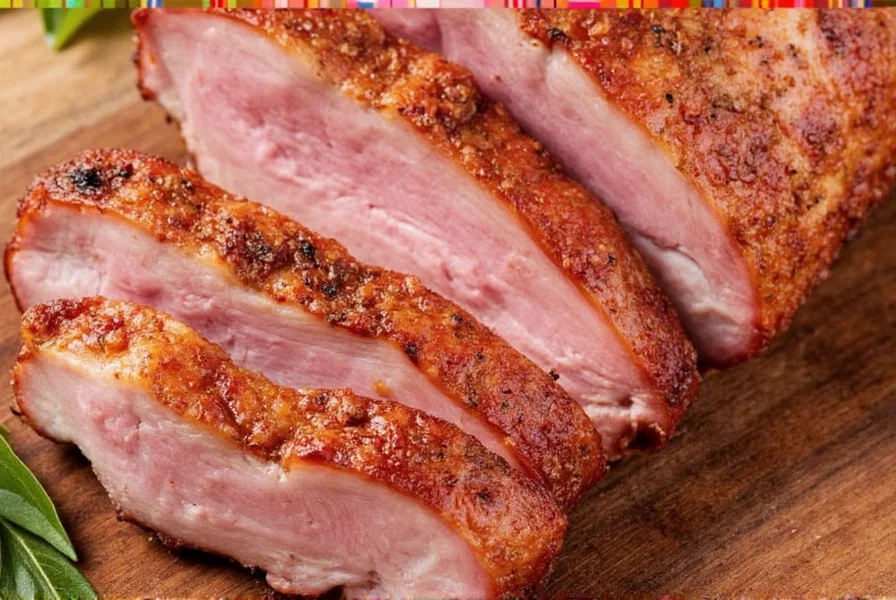









 浙公网安备
33010002000092号
浙公网安备
33010002000092号 浙B2-20120091-4
浙B2-20120091-4